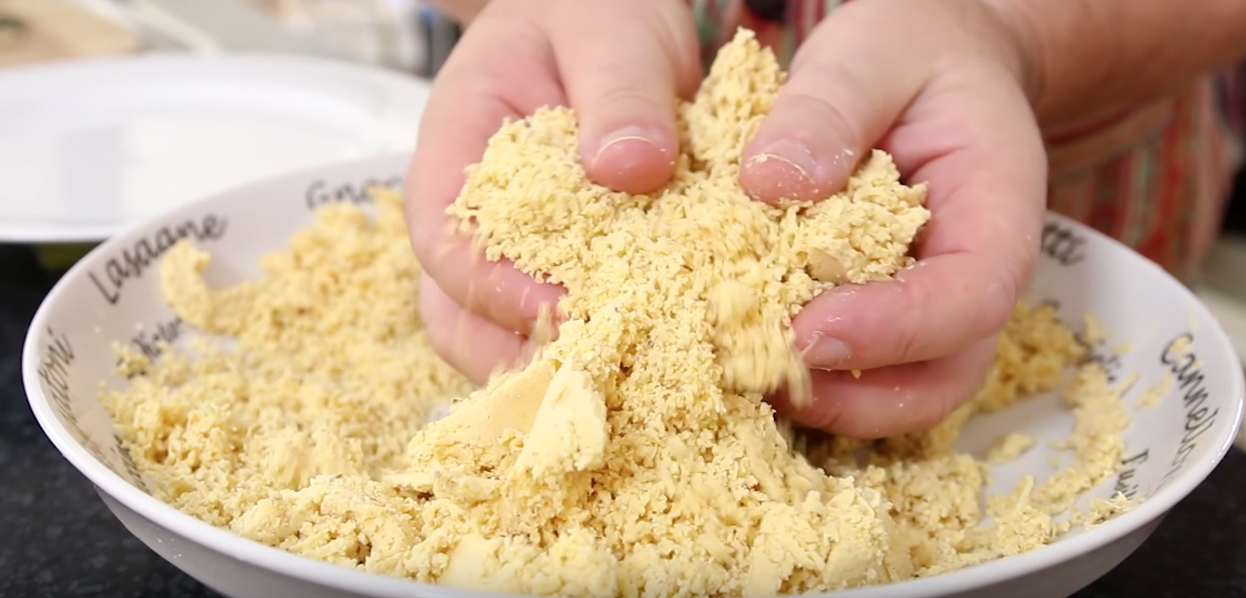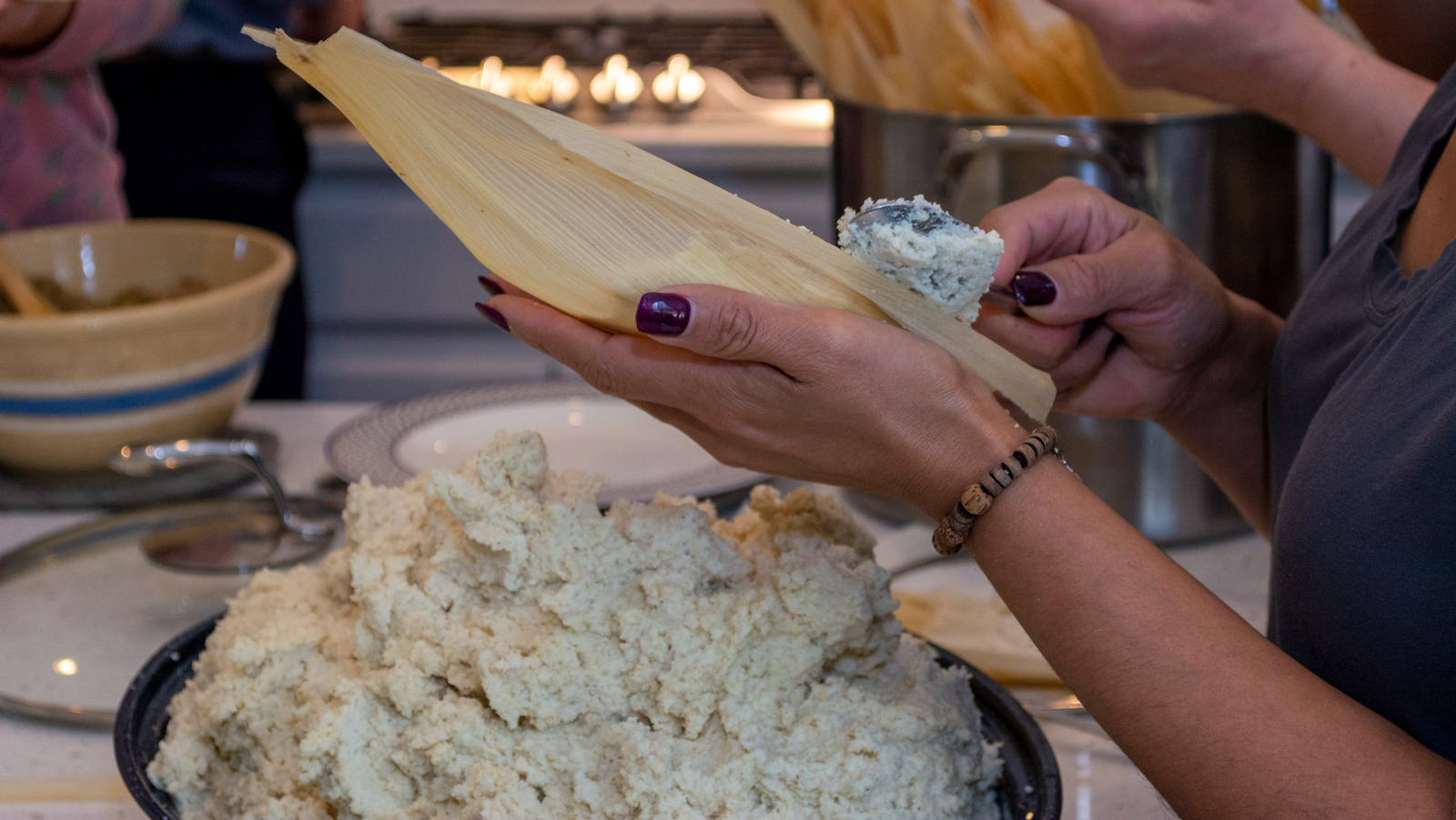Masa's Enduring Appeal: Uncovering The 'Masa Sex' Of Traditional Kitchens
Have you ever stopped to think about what truly makes certain foods so special, so utterly captivating? For many, especially those with roots in Latin American cooking, the answer often comes down to masa. This humble corn dough, a true foundation of countless beloved dishes, holds a particular kind of allure. It is that deep connection, the almost magnetic pull to its texture, smell, and taste, that we might playfully call the 'masa sex' of the culinary world. It's about the profound sensory experience and the cultural significance this simple ingredient carries.
The magic of masa goes far beyond just being an ingredient; it is, in a way, a living tradition. From the hands that grind the corn to the steam rising from a fresh tortilla, every step in its creation tells a story. This connection to heritage, the passing down of recipes and techniques through generations, makes masa a very powerful symbol of home and community. It's something truly special, a cornerstone of many family tables.
Today, people are increasingly curious about the origins of their food and the stories behind traditional preparations. This growing interest makes masa, and what we are calling its 'masa sex,' more relevant than ever. Folks want to know how things are made, where they come from, and how they connect to a broader culture. So, let's take a closer look at what makes this corn dough so incredibly appealing, and why it continues to hold such a strong place in our hearts and kitchens, even now.
Table of Contents
- Masa: More Than Just Dough
- The Process Behind the Magic
- Dishes That Showcase Masa's Appeal
- Bringing Masa Into Your Kitchen
- The Growing Interest in Masa
- Frequently Asked Questions About Masa
- A Lasting Connection
Masa: More Than Just Dough
When we talk about 'masa sex,' we're really talking about the profound way masa connects with people. It's a very deep connection, something beyond just hunger. This corn dough is a staple in many kitchens, and it holds a special place in the hearts of those who grew up with it. It's about how it feels, how it smells, and the memories it brings back. It’s almost a bit like a comforting friend, always there.
The Sensory Experience
Think about the feel of fresh masa in your hands. It's soft, pliable, and has a unique, earthy scent. That texture is something quite special, you know, it's just right for shaping. As it cooks, perhaps on a hot griddle, a different kind of aroma fills the air—a warm, toasted corn smell that makes your stomach rumble. And then, there's the taste: slightly sweet, a little savory, and incredibly satisfying. It's a whole experience, really, from start to finish, and that is a big part of its deep appeal.
A Cultural Heartbeat
Masa is much more than a food item; it's a vital part of cultural identity for millions. For many, it represents home, family gatherings, and celebrations. Making tortillas or tamales from scratch is often a shared activity, bringing people together in the kitchen. This shared experience, the passing down of recipes and techniques from elders to younger generations, helps keep traditions alive. It is, in a way, a cultural heartbeat, keeping the rhythm of history going.
The Process Behind the Magic
The true wonder of masa comes from a very old process, something people have been doing for thousands of years. It is a simple method, yet it creates something truly extraordinary from basic corn kernels. This transformation is what gives masa its unique properties and its deep appeal, you see. It's a testament to human ingenuity and a connection to the past.
Nixtamalization: A Timeless Technique
The secret to masa's special qualities is a process called nixtamalization. This involves cooking dried corn kernels in an alkaline solution, usually with food-grade lime, known as cal. After cooking, the corn sits for a while, then it gets rinsed and ground. This process does a few amazing things: it softens the corn, makes it easier to digest, and also unlocks important nutrients like niacin. It also gives masa its distinctive flavor and doughy texture. It's a very clever old method, really, and it works wonderfully.
From Corn to Comfort
Once the nixtamalized corn, or nixtamal, is ready, it goes through a grinder. This turns the softened kernels into a smooth, moist dough. This dough is masa. The quality of the masa depends a lot on the corn itself and how carefully the nixtamalization process is done. A good masa will be easy to work with, holding its shape well and cooking up beautifully. It is this transformation, from a hard kernel to a soft, workable dough, that is that first step toward so many comforting meals. It’s pretty cool, if you think about it.
Dishes That Showcase Masa's Appeal
Masa is incredibly versatile, forming the basis of a huge variety of dishes. Each one highlights a different aspect of masa's appeal, showing just how adaptable and wonderful this corn dough truly is. From everyday meals to special occasion foods, masa is often the star. It's like a blank canvas, ready for all sorts of delicious creations, and that is very much a part of its charm.
The Humble Tortilla
Perhaps the most famous use of masa is in making tortillas. A fresh, warm tortilla, cooked just right, is a simple pleasure that is hard to beat. It's soft, flexible, and has that distinct corn flavor. Tortillas are not just a side dish; they are often the main vehicle for a meal, scooping up fillings or serving as the base for tacos and enchiladas. The act of pressing and cooking tortillas, seeing them puff up on the comal, is a very satisfying experience. It's a daily ritual for many, and it speaks volumes about masa's everyday appeal.
Tamales: A Festive Favorite
Tamales are another beloved dish where masa truly shines. Here, the masa is usually mixed with a bit of fat, like lard or vegetable shortening, and often some broth, making it extra tender and flavorful. This masa mixture is then spread onto corn husks or banana leaves, filled with savory or sweet ingredients, and steamed. Making tamales is often a communal event, a gathering of family and friends to prepare a large batch for holidays or celebrations. The anticipation of unwrapping a warm, fragrant tamale is a big part of its special charm. It's a very celebratory food, you see.
Beyond the Basics: Sopes and Gorditas
Beyond tortillas and tamales, masa is used to create many other wonderful dishes. Sopes, for example, are thick masa discs with pinched edges, fried until golden, and then topped with various ingredients like beans, cheese, and meat. Gorditas are similar, but they are usually split open and stuffed with fillings. These dishes show masa's ability to be a sturdy, flavorful base for a wide range of toppings and stuffings. They are hearty and satisfying, offering a different kind of masa experience. There are so many possibilities, really.
Bringing Masa Into Your Kitchen
If you're curious to explore the appeal of masa yourself, bringing it into your own kitchen is a rewarding experience. While making nixtamal from scratch is a bit of a project, there are easier ways to start. You can find ready-to-use masa or masa harina, which is a dried masa flour that just needs water. Getting your hands on this ingredient opens up a world of culinary possibilities. It's a fun thing to try, honestly.
Choosing Your Masa
For beginners, masa harina is a great starting point. It's widely available and easy to use. Just mix it with warm water according to the package directions, and you'll have fresh masa dough in minutes. If you're feeling more adventurous, you might find fresh masa at a local tortilleria or a specialty Latin American grocery store. Fresh masa has a slightly different texture and flavor, often considered superior for certain dishes. Either way, you're on the path to discovering masa's charm. It's pretty straightforward, you know.
Tips for Working with Masa
- Keep it moist: Masa can dry out quickly. Keep it covered with a damp cloth or plastic wrap when you're not working with it.
- Knead gently: Knead the masa until it's smooth and pliable. You want it to hold together without cracking.
- Test your dough: If making tortillas, press one out and cook it. If it cracks too much, your masa might need a little more water. If it's too sticky, add a tiny bit more masa harina.
- Practice makes perfect: Shaping tortillas or tamales takes a little practice. Don't get discouraged if your first few aren't perfect. They will still taste great! It's all part of the learning, you see.
The Growing Interest in Masa
In recent years, there has been a noticeable increase in interest surrounding traditional ingredients like masa. People are looking for more authentic food experiences and wanting to understand the cultural stories behind their meals. This means that masa, with its rich history and deep connection to various cultures, is getting more attention than ever. It's not just chefs in fancy restaurants; home cooks are also eager to learn how to use it. This growing curiosity really highlights the enduring 'masa sex' it holds for so many, even today, in today's culinary world.
This trend is also about appreciating the craftsmanship involved in making masa-based dishes from scratch. There is a renewed appreciation for the time and skill it takes to transform simple corn into something delicious and meaningful. It is a shift towards valuing tradition and authenticity in our food choices. So, in a way, the appeal of masa is spreading, inviting more people to discover its charm. Learn more about masa-making techniques on our site, and you can also find out more about traditional corn varieties.
Frequently Asked Questions About Masa
What is the main ingredient in masa?
The main ingredient in masa is corn, specifically dried corn kernels that have gone through a special cooking process. It's a pretty simple base, really.
Can I make masa at home without special equipment?
While making masa from scratch (nixtamalization) often uses specific tools, you can easily make masa dough at home using masa harina, which is a dried masa flour. You just add water to it, and it's ready to use. It's very convenient, actually.
What are some common dishes made with masa?
Many common dishes use masa, like tortillas, tamales, sopes, gorditas, and pupusas. These are just a few examples, but there are so many more regional specialties across different cultures. It's very versatile, you know.
A Lasting Connection
The appeal of masa, what we have been calling its 'masa sex,' is a powerful thing. It's a mix of its unique texture, its earthy taste, and the deep cultural stories it carries. Masa is more than just a food; it's a connection to history, to family, and to the hands that have prepared it for generations. It continues to capture hearts and taste buds around the world. This enduring charm ensures that masa will remain a beloved staple, always bringing comfort and a sense of tradition to tables everywhere.

Masa: The Heart Of Culinary Culture
![⚖️ ¿Qué es la Masa? ⚙️ [Fácil y Rápido] | FÍSICA | | QUÍMICA | - YouTube](https://i.ytimg.com/vi/uorgKBxIrVI/maxresdefault.jpg)
⚖️ ¿Qué es la Masa? ⚙️ [Fácil y Rápido] | FÍSICA | | QUÍMICA | - YouTube

What Is Masa And How Do You Use It?